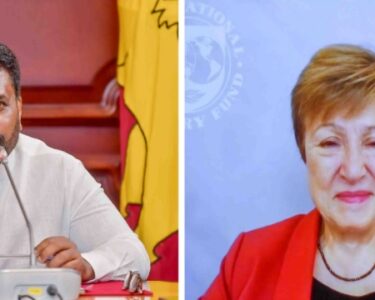The 2025 budget aims to strike a balance between IMF-driven fiscal discipline and the NPP government’s campaign promises. While it maintains economic prudence and allocates substantial funds to key sectors, certain critical aspects remain underdeveloped or missing altogether. Below are the key gaps in the budget:

1. Public-Private Partnerships in Higher Education
Budget Allocation: Rs 135 billion for state universities.
Issue: Lack of incentives for private and foreign universities to set up campuses in Sri Lanka.
Solution: Encourage private-public partnerships to improve global rankings and expand educational access.
2. Comprehensive Roadmap for Digital Economy Growth
Budget Allocation: Rs 3000 million for digital economy acceleration.
Issue: Insufficient funding given the scale of investment required to reach US$ 15 billion digital economy target by 2030.
Solution: More incentives for FDI, possibly diverting a portion of ETF into a sovereign wealth fund for digital start-ups.
3. Transport Modernization and Competitive Tendering
Budget Allocation: Plans for a Metro Bus company.
Issue: No competitive tendering process to introduce a modernized public transport system.
Solution: Open tenders for private and international operators to modernize bus services under a cost-reflective pricing model.

4. Revenue Collection Risks and Over-Reliance on Vehicle Imports
Budget Expectation: Major revenue from resumed vehicle imports.
Issue: High import taxes could limit vehicle purchases, leading to a revenue shortfall.
Solution: Strengthen inland revenue and customs reforms, including stricter VAT collection and digital tracking.
5. Investment in Research and Development (R&D)
Budget Allocation: Rs 1 billion for commercial utilization of R&D.
Issue: Investment too low to drive substantial innovation.
Solution: Increase funding and foster more industry-academic collaboration for commercialization of research.
6. Education and Healthcare Spending Gap
Budget Allocation: Increased funding but below 6% of GDP campaign promise.
Issue: Limited revenue prevents full realization of promised spending levels.
Solution: Explore alternative funding sources, such as targeted private sector investments and international grants.
7. Lack of Structural Reforms in University Sector
Issue: Increased funding may not lead to improved global rankings without organizational reform.
Solution: Implement governance reforms and introduce performance-based funding models for universities.
8. Trade and Investment Reforms
Positive Step: Emphasis on Free Trade Agreements (ASEAN & RCEP).
Issue: Lack of concrete steps to integrate Sri Lanka into regional and global supply chains.
Solution: Provide targeted incentives for export-oriented industries and streamline investment protection mechanisms.
Tangible Outcomes
While the budget presents an ambitious vision, its success hinges on effective implementation. Addressing these gaps—particularly in education, digital economy, transport, revenue collection, and R&D—would strengthen Sri Lanka’s long-term economic prospects. The government must now focus on execution to turn its vision into tangible outcomes.
Rohan Amarajeewa







